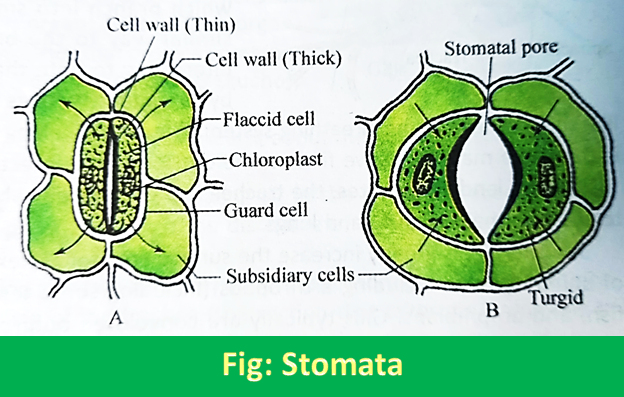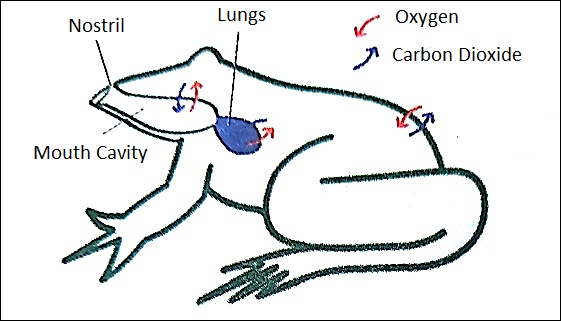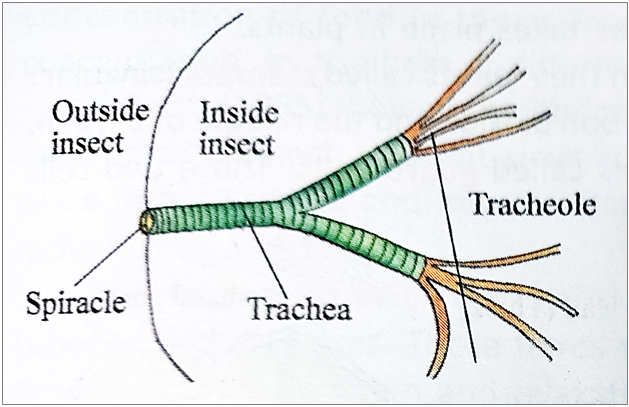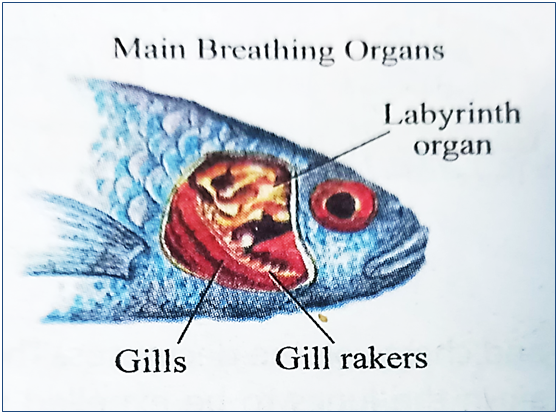Respiration in Plants:
Respiration is the sum total of the physical (external respiration) and chemical (internal respiration) processes in an organism by which oxygen is conveyed to tissues and cells and the oxidation products, carbon dioxide and water are given off. All the body cells metabolically consume oxygen and discharge carbon dioxide. To cover this need, respiration takes place internally and externally.
Plants don’t have great demands for gaseous exchange. The rate of respiration in plants is much lower than in animals. Large amounts of gases are exchanged only during photosynthesis, and leaves are well-equipped for that. Hence, plants don’t have specialized organs for the exchange of gases. Lenticels, stomata, and pneumatophores serve as the openings through which the exchange of gases takes place in plants.
1. Stomata: Plants ‘breathe’ through tiny openings in their leaves called stomata. Stomata open and close to allow the intake of carbon dioxide and the release of oxygen. Each stoma is surrounded by two specialized structures called guard cells. These two cells are attached together at each end of both cells.

The lateral edges of the two cells are not attached to each other, but when flaccid, the sides of the guard cells do touch each other and effectively close the stoma. The opening of the stomata is dependent on how well-hydrated the pant is once the stomata open, the intercellular free space around both the palisade and spongy parenchyma is put into continuous contact with the outside atmosphere.
2. Lenticels: Lenticels are openings that allow gases to be exchanged between air and the inner tissue of a plant. They can be commonly found in the bark and on the outside of fruits. Some are more noticeable than others.
3. Pneumatophores: It is a specialized ‘breathing’ root developed in some plant species that grow in waterlogged or strongly compared soils, such as mangroves. The aerial part of the root contains many pores, enabling gas exchange with the atmosphere. Internally, a well-developed system of intercellular spaces allows gases to diffuse throughout the submerged portion of the roots.
Respiration in Animals:
Respiratory structures are tailored to the need for oxygen, Multicellular organisms in which diffusion distances are longer. It generally resorts to several strategies. Despite the wide array of animal shapes, sizes,s, and habitats, animals obtain oxygen from their surroundings with one of four major types of respiratory structures.
1. Body Surface: Flatworms and annelids use their outer surfaces as gas exchange surfaces. Earthworms have a series of thin-walled blood vessels known as capillaries. Gas exchange occurs at capillaries located throughout the body as well as those on the respiratory surface. Amphibians use their skin as a respiratory surface.

2. Trachea: Many terrestrial animals especially insects have their respiratory surfaces inside the body and are connected to the outside by a series of tubes. Tracheae are those tubes that carry air directly to cells for gas exchange. These tracheae penetrate right through the insect’s body. Air enters the tracheae by pores called spiracles.

These spiracles are found on each side of the insect’s abdomen. The air passes into the tracheae which branch into smaller and smaller tubes in a similar way to the bronchioles in our lungs. It is interesting to note that the tracheae are supported by strengthening rings so as to prevent collapsing, just like the tracheae in our breathing system. The strengthening rings are made of chitin, which is the same material as we find on the outside of the insect.
3. Gills: Gills greatly increase the surface area for gas exchange. They occur in a variety of animal groups including arthropods, annelids, fish, and amphibians. Gills typically are convoluted outgrowths containing blood vessels covered by a thin epithelial layer. Typically, gills are organized into a series of plates and may be internal or external to the body.

4. Lungs: In land vertebrates the organs of external respiration are thin-walled structures are known as lungs which are well supplied with blood vessels. Such structures bring blood into close association at small distances. Tetrapod lungs are paired organs surrounded by pleura and contained in the pleural cavity. Lungs have a surface-to-area volume ratio than the gills.